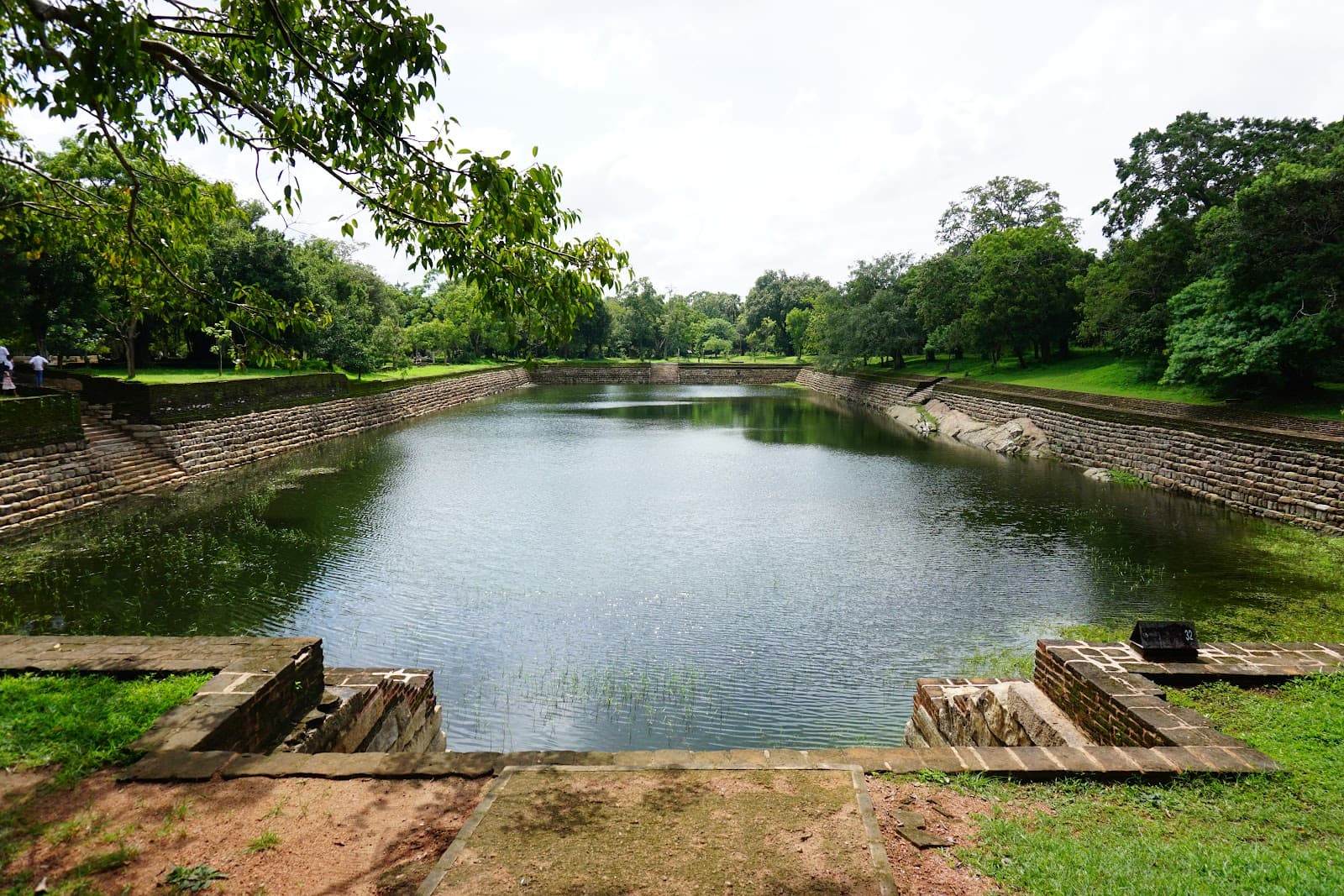
Eth Pokuna Elephant Pond
An enormous ancient reservoir, Eth Pokuna showcases incredible engineering with its functional water system and historical monastic facilities.
Highlights
Must-see attractions
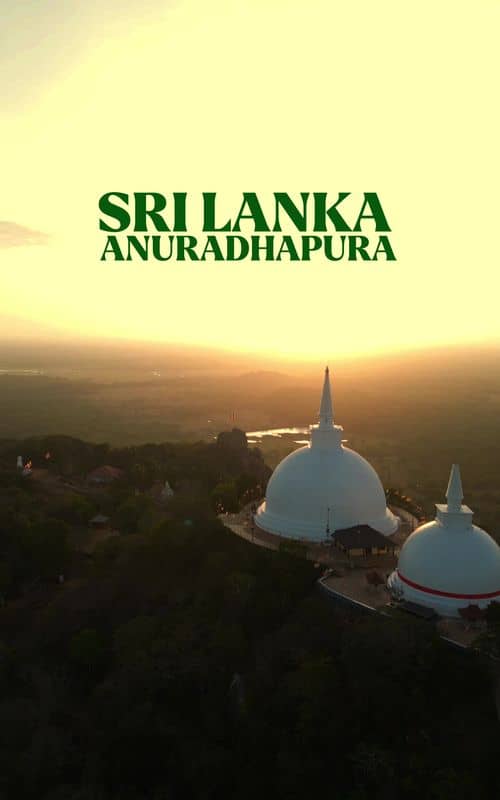
Social
From TikTok & Reddit
Best Time
Beat the heat and crowds

Eth Pokuna Elephant Pond
Best Time
Beat the heat and crowds
Highlights
Must-see attractions
An enormous ancient reservoir, Eth Pokuna showcases incredible engineering with its functional water system and historical monastic facilities.
"A testament to ancient Sri Lankan engineering, Eth Pokuna's functional water system is truly astonishing."

💧 Stay Hydrated
Carry plenty of water, especially during hotter months. The site is vast and can get warm.
👟 Comfortable Footwear
Wear sturdy shoes for exploring the grounds and uneven surfaces.
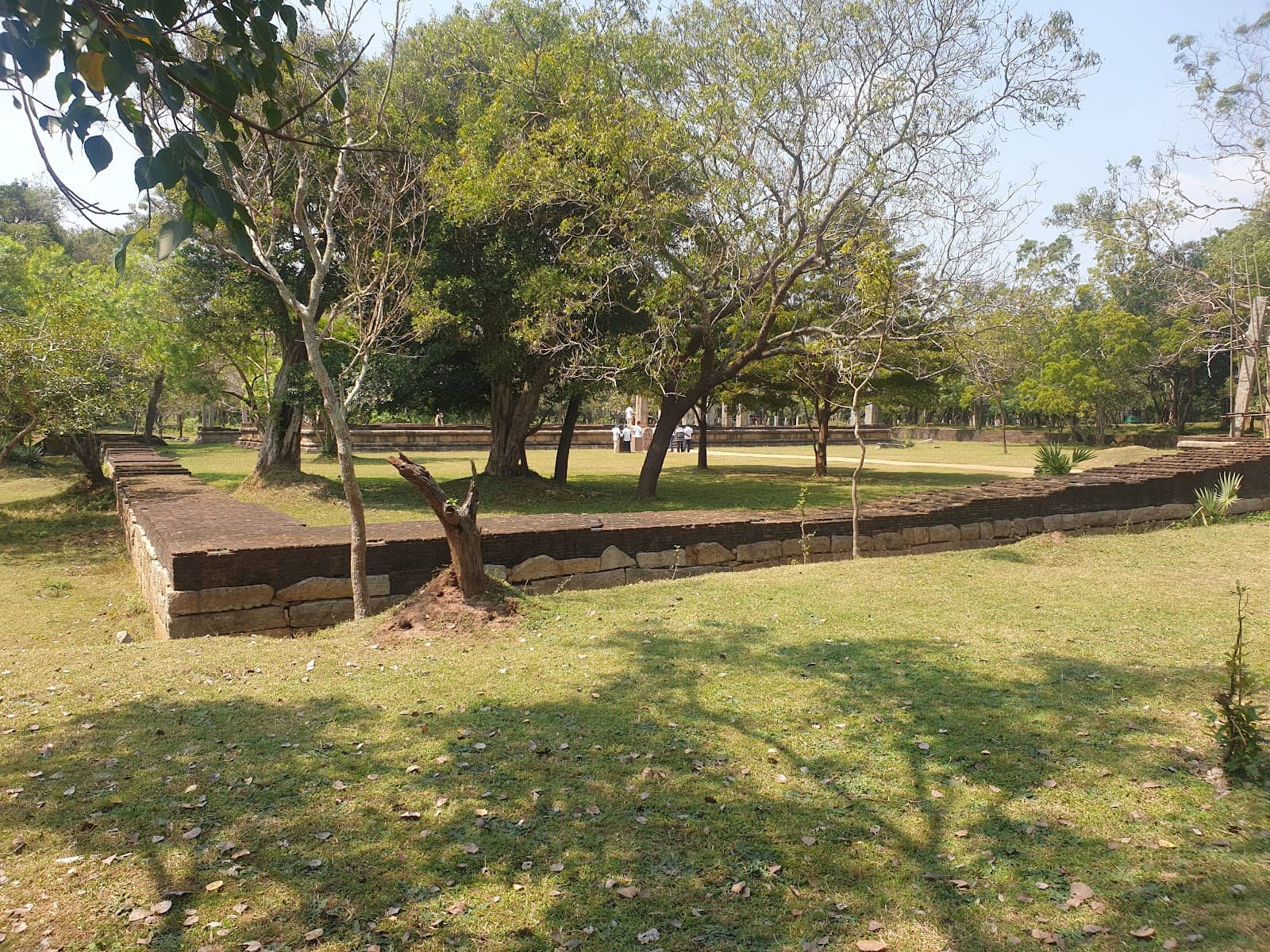
Highlights
Discover the most iconic attractions and experiences

The Grand Reservoir
Near Lankaramaya, Anuradhapura
An enormous ancient tank, larger than two Olympic pools, with impressive stone block construction and functional water conduits.

Ingenious Water System
Connecting to Periyamkulama Tank
Discover the ancient underground canals and filter pits that still supply water, a testament to sophisticated ancient hydraulic engineering.

Monastic Wellness Facilities
Adjacent to the pond
Explore the remnants of steam baths and a gym, revealing the ancient emphasis on monks' physical health for meditation and focus.
Plans like a pro.
Thinks like you
Planning Your Visit
Ancient Engineering Marvel
Beyond the Name
Best Times
Insider Tips
from TikTok, Instagram & Reddit
💧 Stay Hydrated
Carry plenty of water, especially during hotter months. The site is vast and can get warm.
👟 Comfortable Footwear
Wear sturdy shoes for exploring the grounds and uneven surfaces.
🕰️ Allow ample time
Don't rush! Explore the pond, water channels, and wellness areas thoroughly.
📸 Capture the Scale
Wide-angle lenses are great for showing the immense size of the pond.
Tips
from all over the internet
💧 Stay Hydrated
Carry plenty of water, especially during hotter months. The site is vast and can get warm.
👟 Comfortable Footwear
Wear sturdy shoes for exploring the grounds and uneven surfaces.
🕰️ Allow ample time
Don't rush! Explore the pond, water channels, and wellness areas thoroughly.
📸 Capture the Scale
Wide-angle lenses are great for showing the immense size of the pond.
What Travellers Say
Reviews Summary
Visitors are consistently impressed by the sheer scale and ingenious engineering of Eth Pokuna, marveling at its ancient water supply system that remains functional. The historical significance and the glimpse into monastic life, including the unique wellness facilities, are highly appreciated. Some visitors note that while the name suggests elephants, it was actually a bathing pool for monks, adding an interesting historical nuance.
"Near Lankaramaya in Anuradhapura lies a massive man-made pond known as “Eth Pokuna” or “Elephant Pond.” This rectangular tank measures 159 meters in length, 52.7 meters in width, and 9.5 meters deep, with a capacity of 75,000 cubic meters of water. Its name reflects its impressive size, and it is an integral part of the Abhayagriya Monastery‘s expansive 500-acre landscape. Constructed from large stone blocks arranged at an angle along its walls, the pond features three sets of stairs leading down to its unpaved bottom from the south, north, and eastern sides.
It is not known how the name came to be but possibly due to its sheer size. H.E Weerasooriya records that this pond was called “Kuruwe Wewa” by the locals. The Maha Bodhi Vamsa written in the 12th century mentions two ponds in the Abhayagriya monastery called Diggal Vila and Masthota Vila. It is believed that Masthota Vila is the pond known as Eth Pokuna today.
Water is supplied to this pond from the Periyamkulama Wewa Reservoir via an extensive network of underground conduits, portions of which—constructed from stone blocks—remain visible. Before entering the pond, the water passes through external filter pits that cleanse it.
Remarkably, these ancient canals continue to function even after several centuries; for instance, after an especially heavy rainy season in 1982, water could be seen gushing through these stone-lined inlets from the Periyamkulama Wewa Reservoir. It is believed that this reservoir was historically used by the monks of the Abhayagiri Monastery, who numbered over five thousand priests.
The water to this pond has been supplied from the Periyamkulama Tank through a network of underground conduits, and you still can see part of the water lines made out of stone blocks. The water is filtered through external filter pits before the water is fed to the pond.
These underground canals still work after so many hundreds of years and in 1982 after a very heavy rainy season, you could see water pouring through these inlets from the Periyamkulama tank.
This tank probably has been used by the monks in the Abayagiri Monastery who amounted to over five thousand priests."
THISARA NEO
"Elephant Pond, known in Sinhala as "Ath Pokuna" (ඇත් පොකුණ), was constructed during the Anuradhapura era. Despite its name, it was not built for elephants to bathe. Instead, it was developed as a bathing pool for Buddhist monks.
In fact, this was a large swimming pool designed to serve thousands of monks. Ath Pokuna is the largest ancient pool in the area and is nearly twice the size of an Olympic swimming pool. Nearby, there are several smaller ponds also used for bathing, but they are not as deep as Ath Pokuna.
The site also includes a space believed to be used for steam baths, similar to a sauna, and historical records suggest that there was even a gym area. This was intended to help monks sweat and improve their physical health, supporting better focus and stability in meditation. The belief was that physical wellness contributes to mental clarity."
Manuri Pabasari Waleboda
"There is a large rectangular pond near Lankaramaya in Anuradhapura, Sri Lanka called "Eth Pokuna" or "Elephant Pond". It spans 159 meters in length, 52.7 meters in width, and 9.5 meters in depth with a holding capacity of 75,000 cubic meters of water. The pond is made out of large stone blocks stacked at an angle along the walls, and there are three sets of stairs leading to the bottom. The water is supplied from the Periyamkulama Tank through a network of underground conduits and filtered through external filter pits before being fed to the pond. These underground canals still work after so many hundreds of years."
Dumindu Tharanga
What People Like
What People Dislike
Frequently Asked Questions
🚇 🗺️ Getting There
Eth Pokuna is located near Lankaramaya in the ancient city of Anuradhapura, Sri Lanka. You can reach it by hiring a tuk-tuk or a car from Anuradhapura town. Many visitors combine it with a tour of other ancient sites in the area.
While buses serve Anuradhapura town, reaching Eth Pokuna directly via public transport might be challenging. Hiring a local tuk-tuk is often the most convenient way to navigate between the ancient sites.
Many travelers rent bicycles or tuk-tuks to explore the vast Anuradhapura ancient city. This allows you to stop at various points of interest like Eth Pokuna at your own pace.
Eth Pokuna is situated near the Lankaramaya stupa, making it easy to visit both sites together. It's part of the larger Abhayagiriya Monastery complex.
Yes, you can drive your own vehicle or a rented one to the vicinity of Eth Pokuna. Parking is generally available, though it might be informal.
🎫 🎫 Tickets & Entry
Eth Pokuna is part of the Anuradhapura ancient city, which requires an entrance ticket. This ticket grants access to multiple historical sites within the archaeological park.
The Anuradhapura ancient city sites, including Eth Pokuna, are generally open from sunrise to sunset. It's advisable to check the official timings upon arrival.
Entrance fees for the Anuradhapura ancient city can vary for locals and foreigners. It's best to check the current rates at the ticket counter or official tourism websites.
While online booking options might be limited, purchasing tickets at the main entrance to the Anuradhapura archaeological park is standard.
Visiting early in the morning or late in the afternoon can help you avoid the peak crowds and enjoy a more peaceful experience.
🎫 🧭 Onsite Experience
Eth Pokuna, meaning 'Elephant Pond,' is a massive ancient reservoir built for bathing Buddhist monks, not elephants. Its immense size likely led to the name.
The pond is approximately 159 meters long, 52.7 meters wide, and 9.5 meters deep, with a capacity of 75,000 cubic meters of water.
Water was supplied from Periyamkulama Tank through a network of underground stone-lined conduits, which are still functional today.
Yes, the site includes areas believed to be ancient steam baths and a gym, highlighting the focus on monks' physical well-being.
While it's a large pool, swimming is generally not permitted as it's an archaeological site. It's best to admire its scale and engineering.
📸 📸 Photography
The best photo opportunities are from the edges of the pond, capturing its vastness. The staircases leading down also make for interesting shots.
A wide-angle lens is highly recommended to capture the sheer scale of the pond. A drone can offer unique aerial perspectives if permitted.
Yes, photography is generally allowed at Eth Pokuna. However, always be respectful of the historical site and other visitors.
Early morning or late afternoon offers the best light for photography, with softer shadows and a warmer glow on the ancient stones.
While general photography is allowed, using tripods or professional equipment might require special permission. Drones may also have restrictions.
For Different Travelers
Tailored advice for your travel style
👨👩👧 Families with Kids
Encourage kids to look for the remnants of the steam baths and gym, explaining how ancient monks stayed healthy. It's a great way to connect history with physical well-being. Remember to bring plenty of water and snacks, as facilities are limited. Comfortable shoes are a must for exploring the grounds.
🏛️ History Buffs & Archaeology Enthusiasts
Delve into the historical context by researching the Abhayagiriya Monastery and the daily life of its monks. The adjacent wellness facilities offer a rare insight into the holistic approach to spiritual and physical health in ancient Sri Lanka. Consider hiring a local guide for deeper historical context.
🚶 Solo Travelers
Take your time to wander around the pond and explore the surrounding areas. It's a great spot to reflect on history and the enduring legacy of ancient civilizations. Consider renting a bicycle to easily navigate to Eth Pokuna and other sites in Anuradhapura.
Deep Dives
In-depth insights and expert knowledge
The Engineering Marvel of Eth Pokuna
The true genius of Eth Pokuna lies in its water supply system. Water was ingeniously channeled from the Periyamkulama Wewa Reservoir through an extensive network of underground conduits. Portions of these stone-lined channels are still visible, offering a glimpse into the intricate planning involved. Before reaching the pond, the water underwent filtration through external filter pits, ensuring its cleanliness for the monks. What's astonishing is that these ancient canals remain functional even after hundreds of years, as evidenced by water flowing through them after heavy rains.
Beyond its primary function, the area surrounding Eth Pokuna reveals a holistic approach to monastic life. Historical records and the presence of adjacent structures suggest the existence of facilities for steam baths, akin to saunas, and even a gym. This indicates a strong emphasis on maintaining the physical health and well-being of the monks, believing that a healthy body supports a clear and focused mind, essential for meditation and spiritual practice.
Life as a Monk in Ancient Anuradhapura
The inclusion of steam baths and a gym suggests a proactive approach to health. In ancient traditions, physical vitality was often seen as intrinsically linked to mental clarity and spiritual progress. By providing facilities for sweating out toxins and engaging in physical exercise, the monks were likely encouraged to maintain peak physical condition, which in turn would enhance their ability to meditate for extended periods and maintain focus during their studies and rituals. This integrated approach to well-being is a fascinating aspect of monastic life.
Eth Pokuna, therefore, is more than just an ancient water reservoir; it's a window into a sophisticated society that valued both spiritual enlightenment and the physical health required to achieve it. The meticulous planning of water management and the provision of comprehensive facilities highlight the advanced understanding of human needs within the monastic context of the Anuradhapura era.


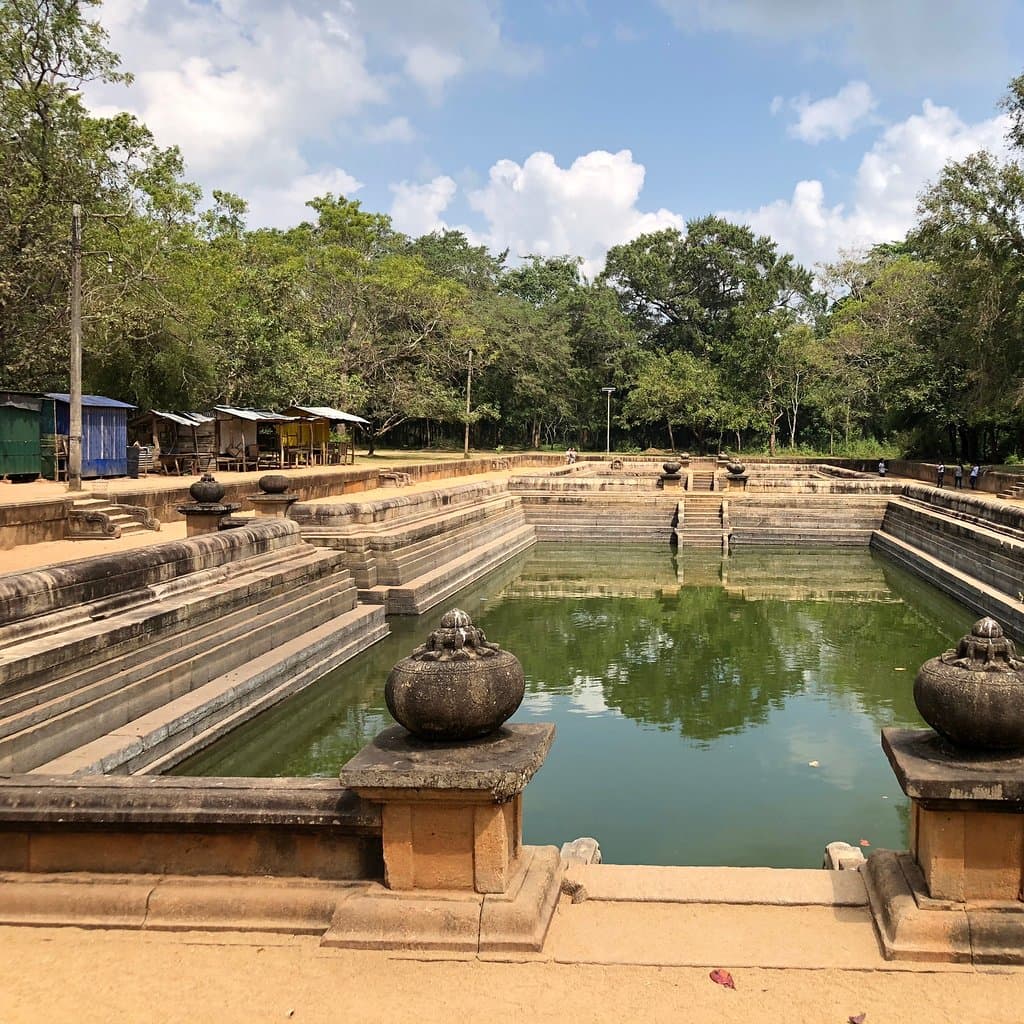
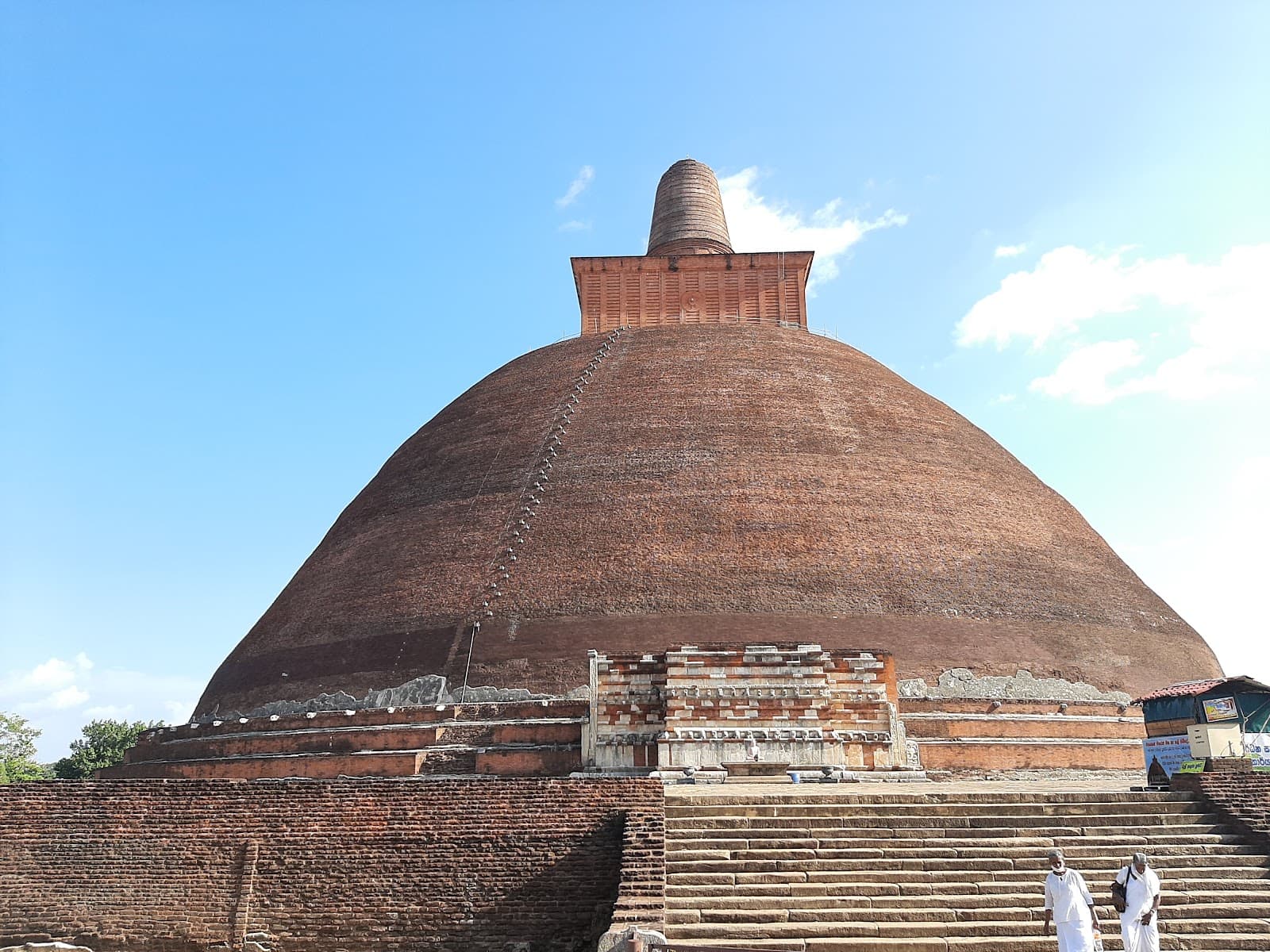
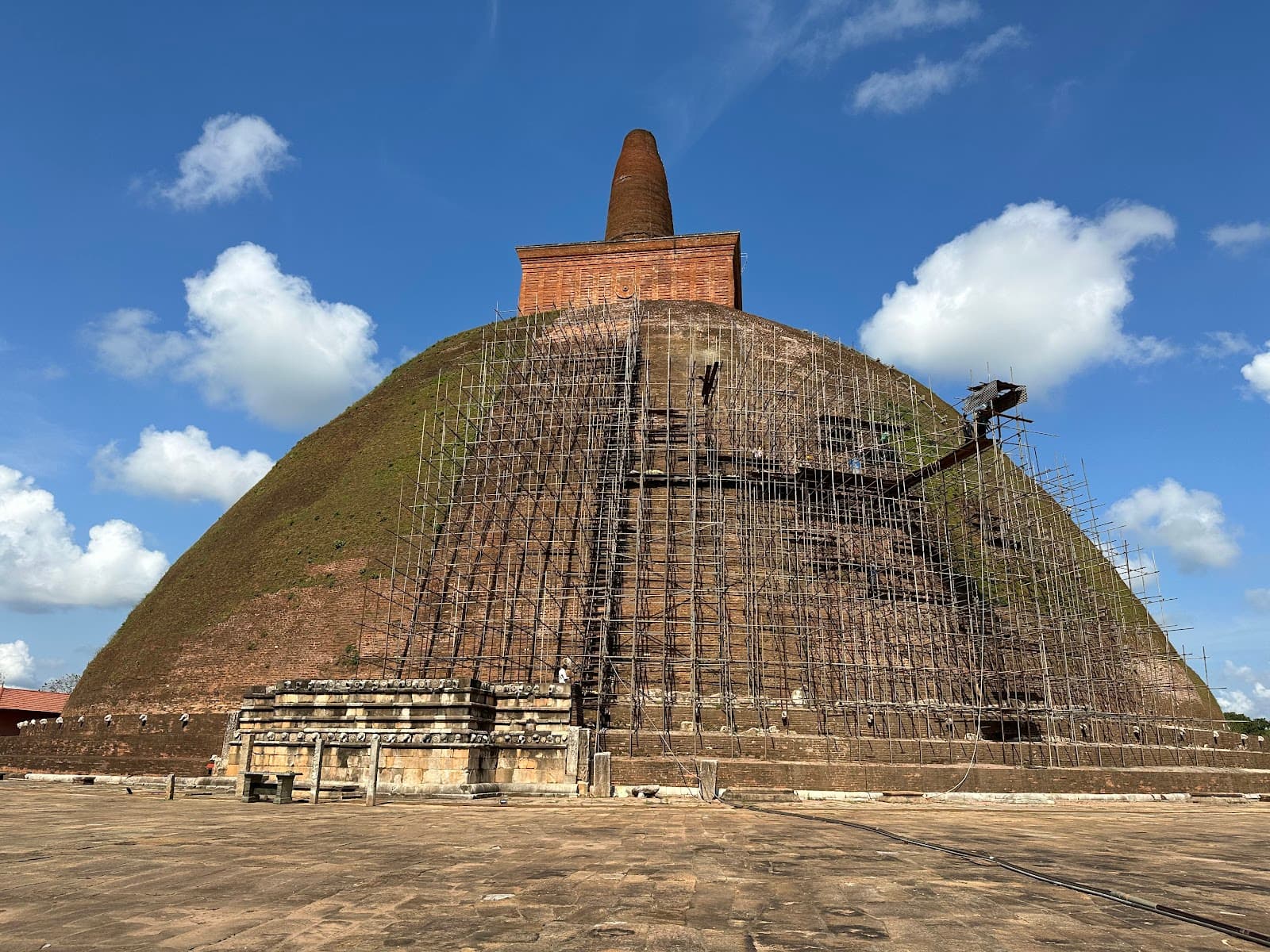
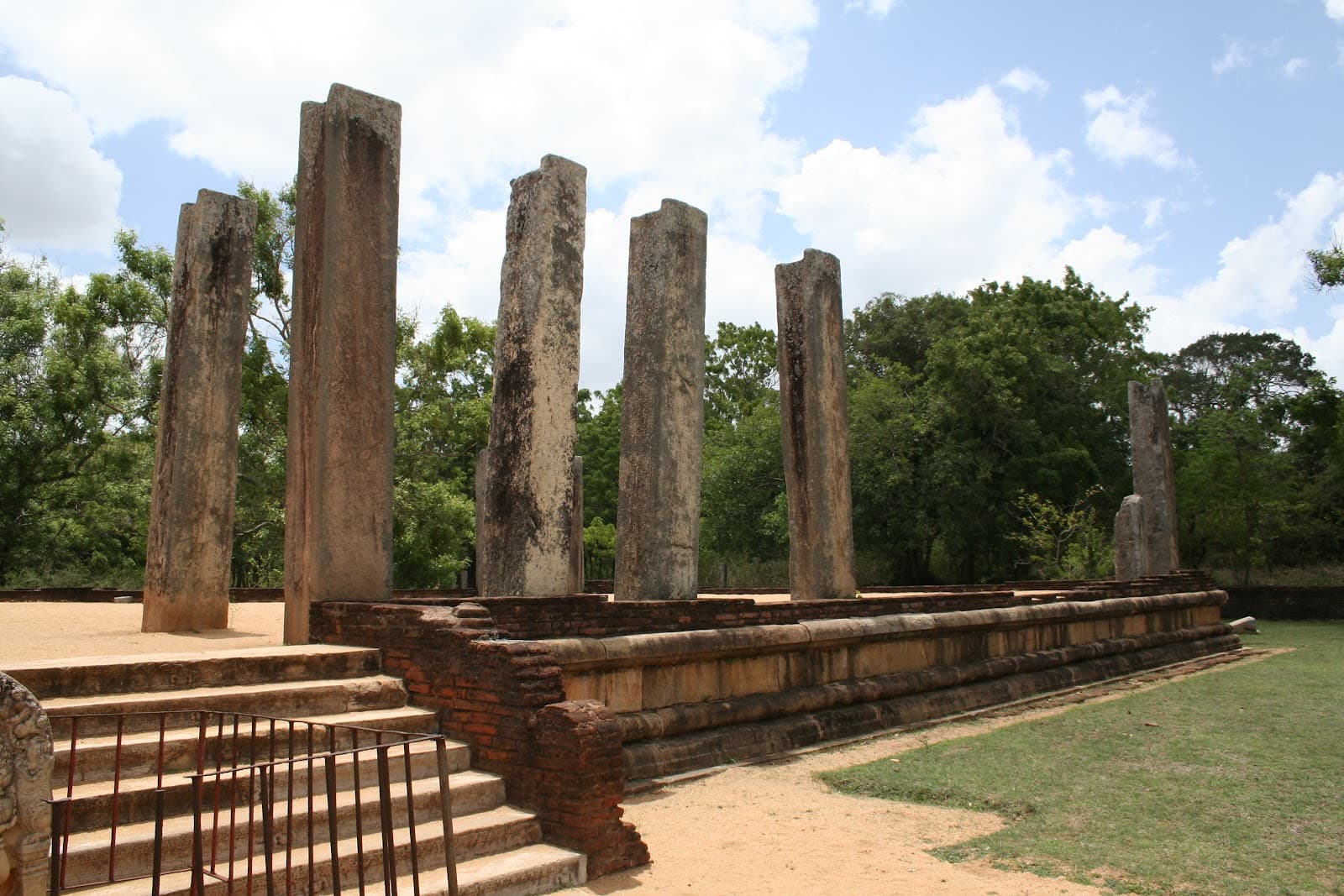
Social
from TikTok, Instagram & Reddit